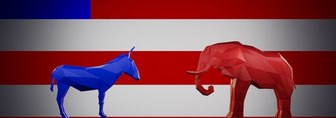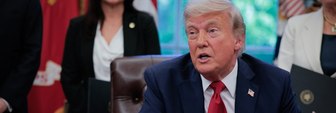Clean-up on aisle GOP.
What a year it has been for the Grand Old Party.
Thursday marks one-year since Donald Trump descended, thumb raised, into the Trump Tower lobby to launch his presidential campaign – a moment few realized to be as significant as it turned out. It seems likely GOP leaders, in particular, expected to be in a different place than where they are right now: Republicans in Congress openly doubting or even opposing their party’s nominee, who only yesterday told them to “just please be quiet”. In the latest YouGov/Economist Poll, 61% of registered voters had an unfavorable opinion of the Republican nominee, with only 38% favorable.
The problems Trump has had with his own public image, however, may obscure some worrying signs for the party as a whole and its brand.
Just look at the “generic presidential ballot”, which is a question YouGov asks that pushes voters to decide between a nameless “Republican Party candidate” and “Democratic Party candidate”. When Trump launched his campaign in June last year – one day after Jeb Bush announced his own ill-fated candidacy – the Democrat had a narrow 3-point lead which by January had dissolved and became a 7-point lead for the Republican. But in mid-March, the script flipped again, and the generic Democrat has led ever since.
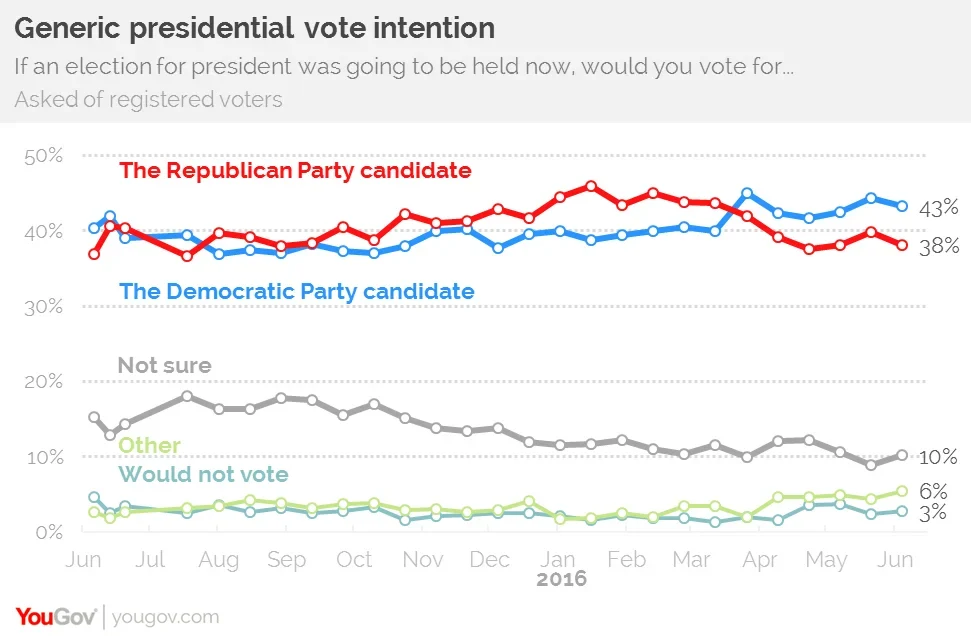
Some of this could be due to perceptions that Trump would be the nominee, but likely not all. Marco Rubio dropped out after losing his home state of Florida on March 15th, but YouGov’s polling in late February already suggested that 62% of voters expected Trump to win the nomination. Looking more generally at views about the party and other prominent GOP figures, it shows a decline in popularity across the board.
The net favorability of the Republican Party is highlighted below, and it also shows a dip around March. The GOP hasn’t received a higher disapproval rating than its current rating of 67% since August 2014, as the party’s reputation was still recovering from the 2013 government shutdown. Only 28% of registered voters have a favorable opinion of the GOP.
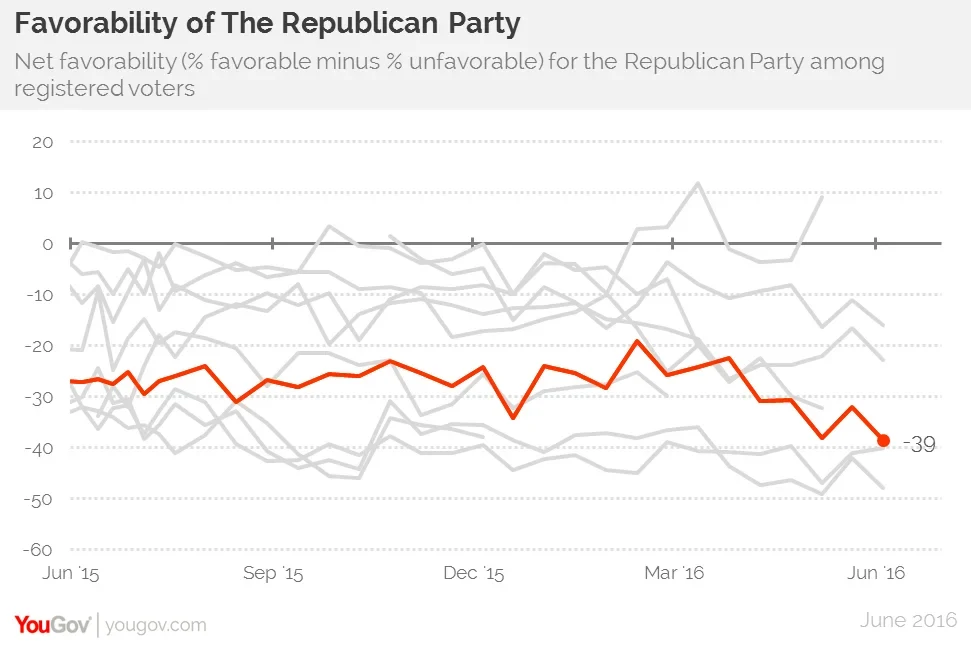
There is a similar trajectory for the party’s congressional leaders as well as the generic category of “Republicans in Congress”. Senate Majority Leader Mitch McConnell’s ratings appear to be mostly tied to views of Congressional Republicans as a group, as were former House Speaker John Boehner’s. In a possibly more worrying sign, Boehner’s successor, Paul Ryan, has seen his favorability ratings decline the longer he’s been in that position. Negative opinions of Ryan have risen from 36% in late-October 2015 to 50% in June.
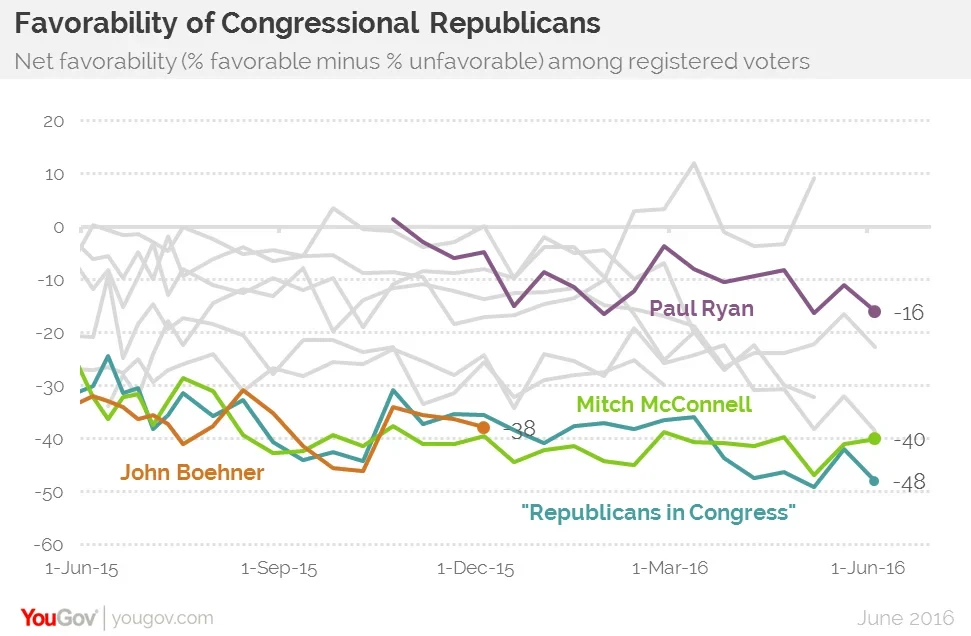
Ryan, who came into the public eye as Mitt Romney’s running mate, is a rising star in the party and has had an especially fraught relationship with Donald Trump (but his problems with the GOP base predate the primary season).
But Ryan is not the only up-and-coming Republican to see his star dim. Indeed, while Trump’s own national favorability numbers are historically low for a major party nominee, they were actually unremarkable among most of his competitors in the primary. Marco Rubio ended his run with a rating of -20 among registered voters. In a survey taken immediately after he dropped out, Ted Cruz came in at -32, with 63% unfavorable among registered voters. Only John Kasich escaped more or less unscathed, with 48% favorable to 39% unfavorable as of early May.
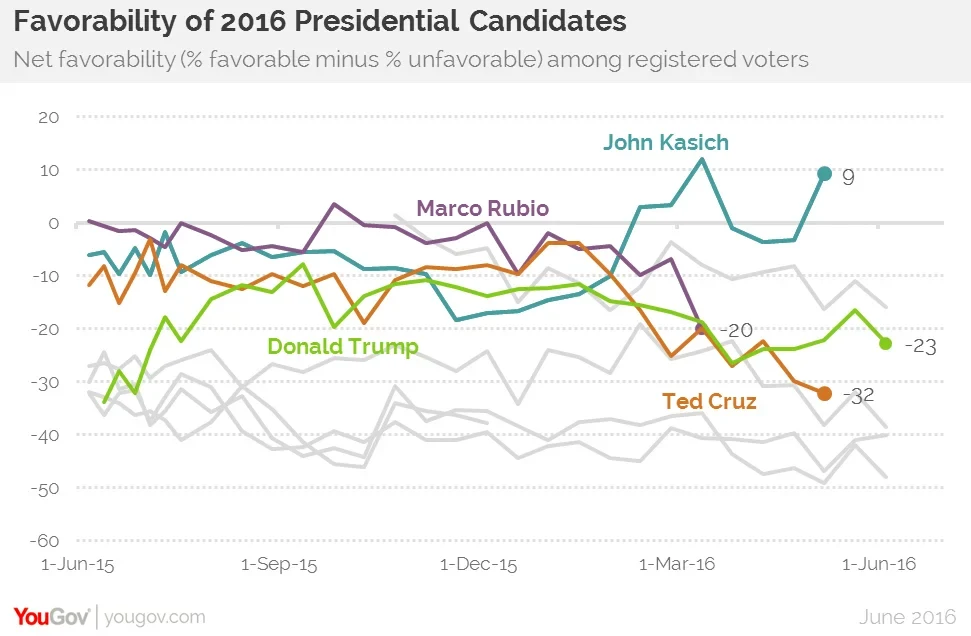
It’s easy to see a lot of this through the lens of Trump. Would Cruz be so unpopular if Trump hadn’t introduced so many to “Lyin’ Ted”? Would Rubio have ended his campaign as an amatuer insult comic if he had faced a more conventional field of opponents? It’s impossible to know. And people do forget. Trump himself quickly transformed his image with Republican voters, a bittersweet anecdote for his vanquished opponents.
Yet the bigger picture is sobering for the Republican Party, particularly as it fights to keep control of the Senate and the House. Hillary Clinton, the Democratic nominee, is nearly as unpopular as Donald Trump, with 38% positive and 60% negative ratings. The Democratic Party, however, is more popular: 42% favorable to 54% unfavorable. Barack Obama’s approval rating is 46% and on the upswing, and Joe Biden has a favorable rating of 52%. Bill Clinton's ratings have softened, but he remains a fairly popular ex-President (47% favorable to 50% unfavorable), and those who know liberal star Sen. Elizabeth Warren tend to like her (36% to 30%). Clinton’s own tireless challenger, Bernie Sanders, is viewed favorbaly by 50% of registered voters.
Much of the Democrats’ strength comes from the loyalty of partisans – as much as railing against the “party establishment” has fueled Sanders’s own unlikely campaign, the Democratic rank-and-file are much more unified than their Republican counterparts.
Will Republicans finally start getting along when Trump is formally coronated at the convention in July? Year One of the Trump campaign is done. Let’s see how Year Two pans out.
Click here for the full YouGov/Economist Poll archive





